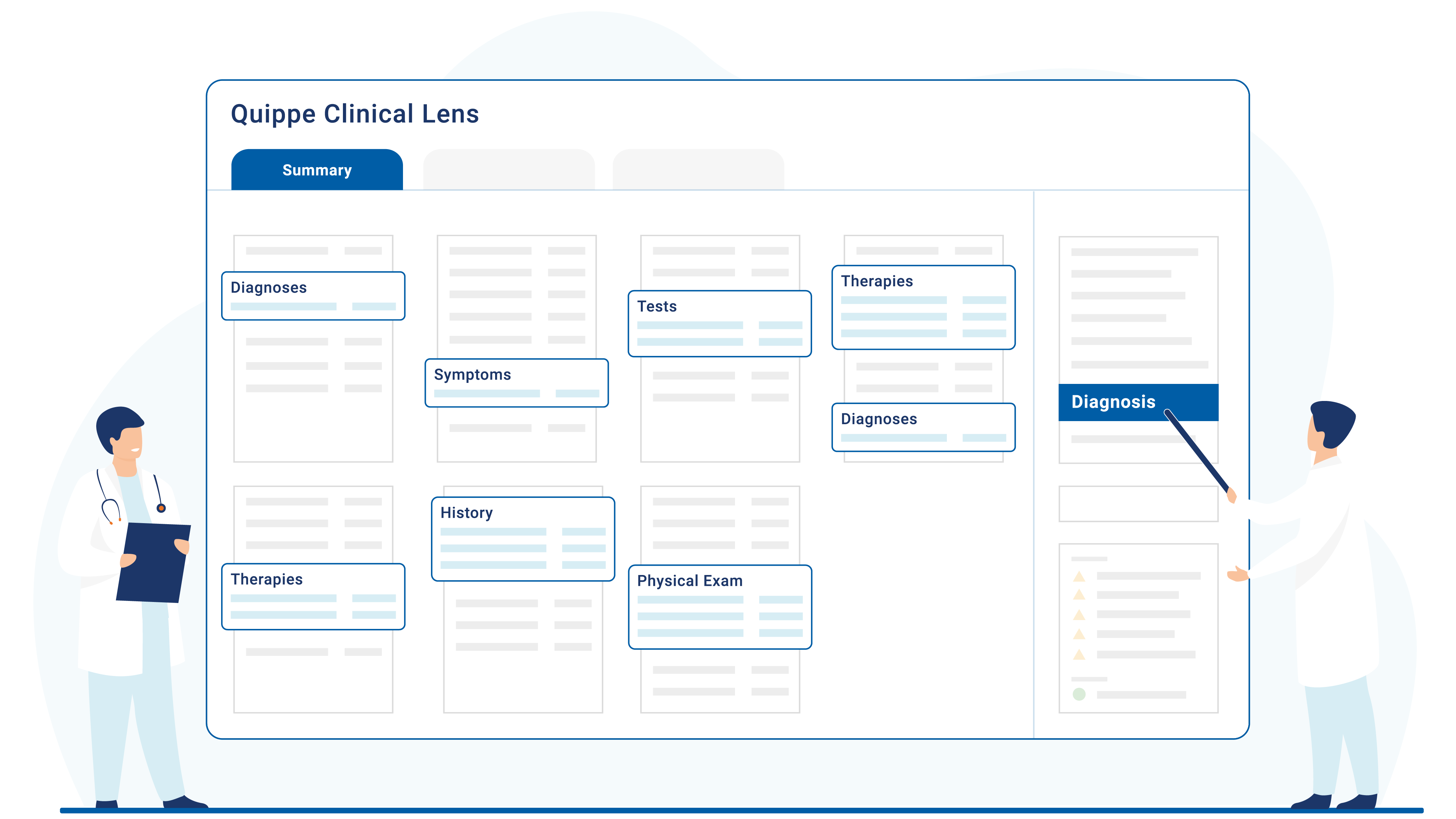I apologize for the gratuitous play on words with FHIR, but I do sincerely hope that the Cerner approach to opening their system to third-party solutions will spread throughout our industry.
Working within the Cerner Open Developer Experience (CODE) program and App Gallery, we now can present a problem-oriented view of a patient record using natural language processing (NLP) of unstructured chart notes, combined with the structured data content in Cerner Millennium® EHR for diagnoses, medications, lab results, orders, and therapies. And, using Cerner Ignite APIs℠, we can process a patient chart using our Quippe clinical relevancy engine and enable a user to filter a chart diagnostically with a single command.
Simply by clicking on any item in a problem list a clinician can see the medications, labs, orders, symptoms, history, physical exam findings, and co-morbidities that are clinically relevant for the problem. A user also can see any quality measures that are relevant for that patient and determine if the documentation complies with CMS requirements for risk-based contracts such as Medicare Advantage.
This is all possible because Cerner has provided APIs to enable third-party tools, such as our Quippe Clinical Lens, to integrate with their EHR.
We’ve found that Cerner APIs provide access to more information than most other vendors—with fewer restrictions. They provide FHIR resource implementations in a more open-ended and accessible manner than others we have seen, which makes it easier to develop against their APIs. And their documentation is very helpful.
Cerner team members were supportive during our development and during the validation process. They helped us identify potential gaps in our implementation and directed us to the data and information we needed to present a problem-oriented view of a patient record.
We are encouraged by the statements made recently by Dr. David Feinberg, the Cerner CEO, in which he said that Cerner is open to collaborating with other organizations to provide solutions that add capabilities. Our experience with their CODE program and App Gallery demonstrated that they “walk the walk.” Dr. Feinberg recently spoke about getting the right information to the right people at the right time. By offering Quippe Clinical Lens in the Cerner App Gallery, we are now able to present clinically relevant information to providers at the point of care.
Going forward, we hope that the pressures induced by the 21st Century Cures Act motivate other EHR vendors to adopt the Cerner open approach to information sharing and collaboration. It will benefit everyone: patients, providers, healthcare institutions, and those who pay for all of it.
